A model is a realistic description of a theoretical framework of a discipline or a thought. It depicts the conceptual viewpoint of a thought in a realistic term. Thus, a model describes a system used for explaining something.
This helps to understand a complex thought in a simplified manner. Dean Bamlund (1970:98-110), a communication theorist, said that a communication model is a pictorial depiction of how communication looks if we diagram it.
Thus, a model is a simplification but also a predictor of how communication might occur.
7 Models of Communication
Action Model or Shannon and Weaver Model of Communication
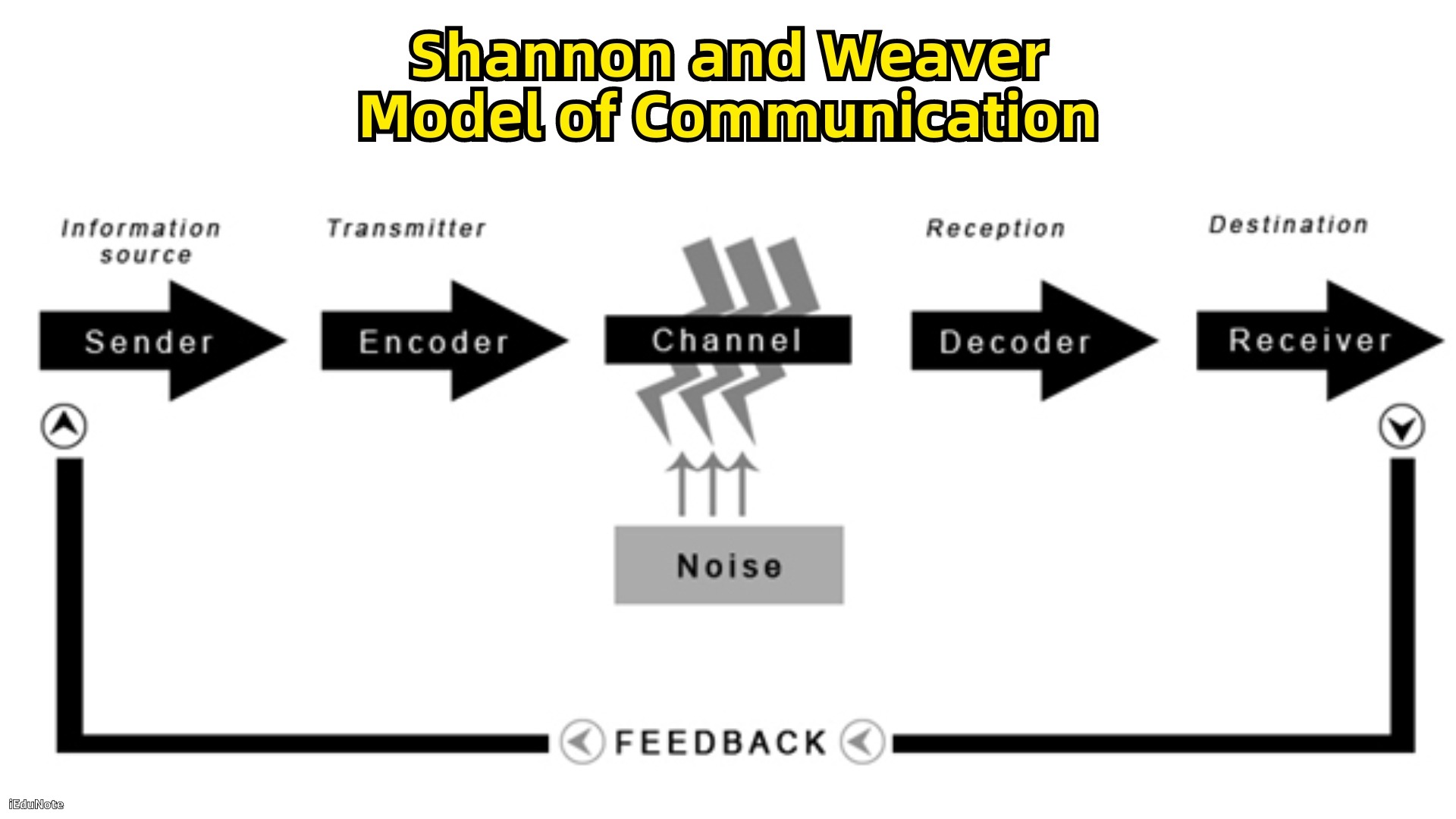
The action model of communication understands communication as linear and sequential action phenomenon. It is recognized as Shannon and Weaver’s model of communication (1949).
Here, communication is perceived as an action framework where a person sends a message and another receives it. Using this model of communication, the speaker sends the message to the audience as a kind of inoculation in which the message is a shot that may or may not take effect.
This is a one-way communication model. Orders, directives, instructions etc. follow this model of communication in an organization.
Who developed the Shannon-Weaver Model of Communication, and when?
The Shannon-Weaver Model of Communication was developed by an American mathematician and electronic engineer, Shannon, and an American scientist, Weaver, in 1948.
What is the primary purpose of the Shannon-Weaver Model of Communication?
The model is designed to develop effective communication between sender and receiver and to identify factors affecting the communication process, such as “Noise.”
What are the main components of the Shannon-Weaver Model?
The main components include the Sender (originator of the message), Encoder (transmitter converting the message into signals), Channel (medium for transmission), Noise (interference), Decoder (converts signals back into a message), and Receiver (destination of the message).
Is the Shannon-Weaver Model applicable to group or mass audience communication?
The model is more effective in person-to-person communication and is generally considered less effective for group or mass audience communication due to its focus on “Sender and Receiver.”
Interaction Model of Communication
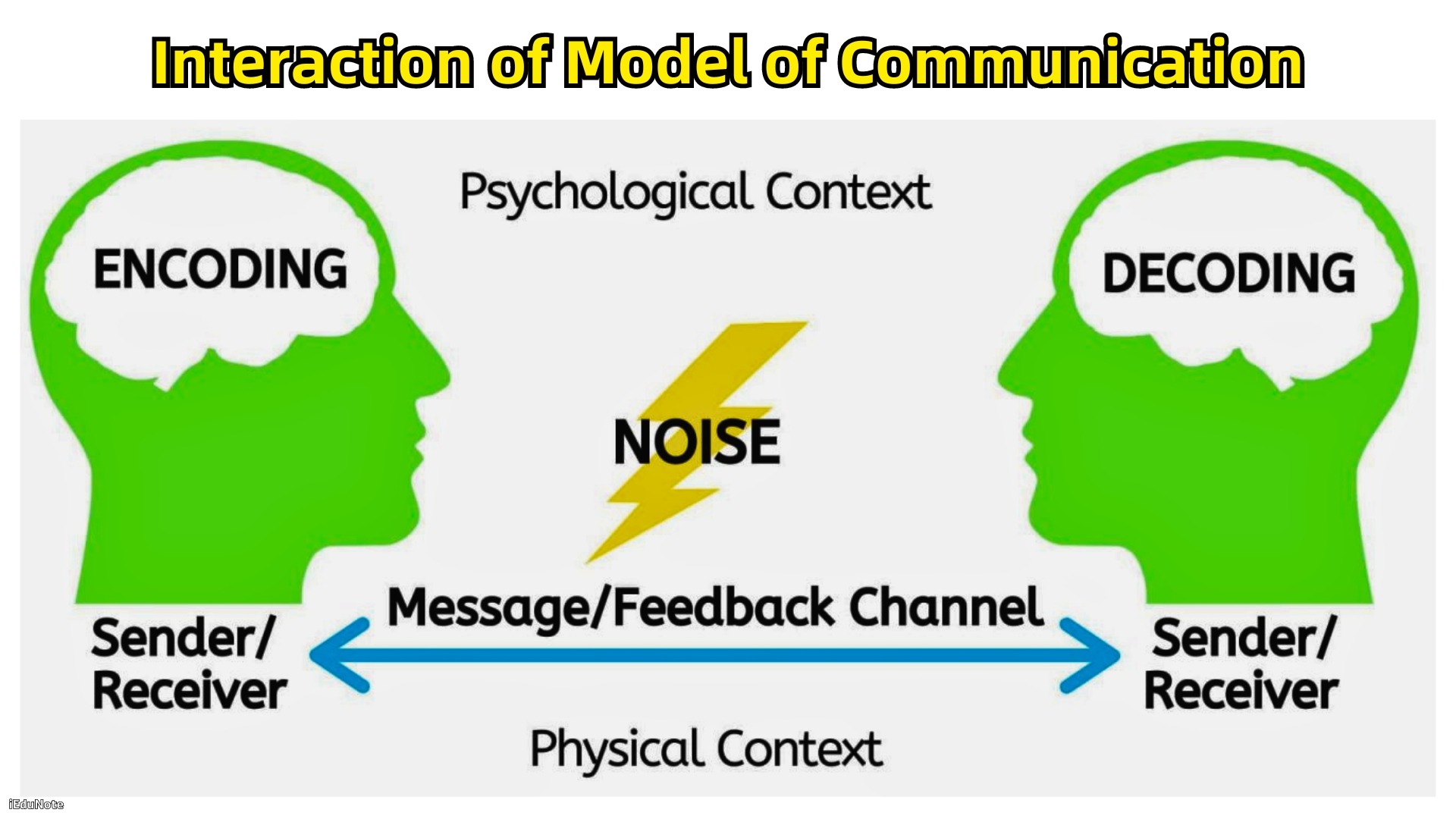
The interactional model of communication views communication as an interaction between people. Here, one person sends a message to a second person, who receives it and responds with another message. The communicators take turns i.e., the role of sending and receiving messages.
This perspective of communication is a two-way communication and very much necessary in business organizations. In this model of communication, the speaker and the receiver take turns linearly being the speaker and listener.
What does the Interaction Model of Communication describe?
The Interaction Model of Communication describes communication as a process where participants alternate as sender and receiver, generating meaning by sending messages and receiving feedback within physical and psychological contexts.
How does the Interaction Model differ from a linear model of communication?
Unlike a linear model, the Interaction Model incorporates feedback, making communication an interactive, two-way process, and it takes into account that multiple messages may be sent at one time, some of which may not be received.
What are the physical and psychological contexts in the Interaction Model?
Physical context includes environmental factors like size, layout, temperature, and lighting of a space, while psychological context includes mental and emotional factors such as stress, anxiety, and emotions that can affect communication.
Are there any limitations to the Interaction Model of Communication?
Yes, while the model considers the broader context of communication, it does not attend to social, political, and economic realities that shape communication, nor does it consider how the identities of the participants inform their communication with each other.
Transaction Model of Communication
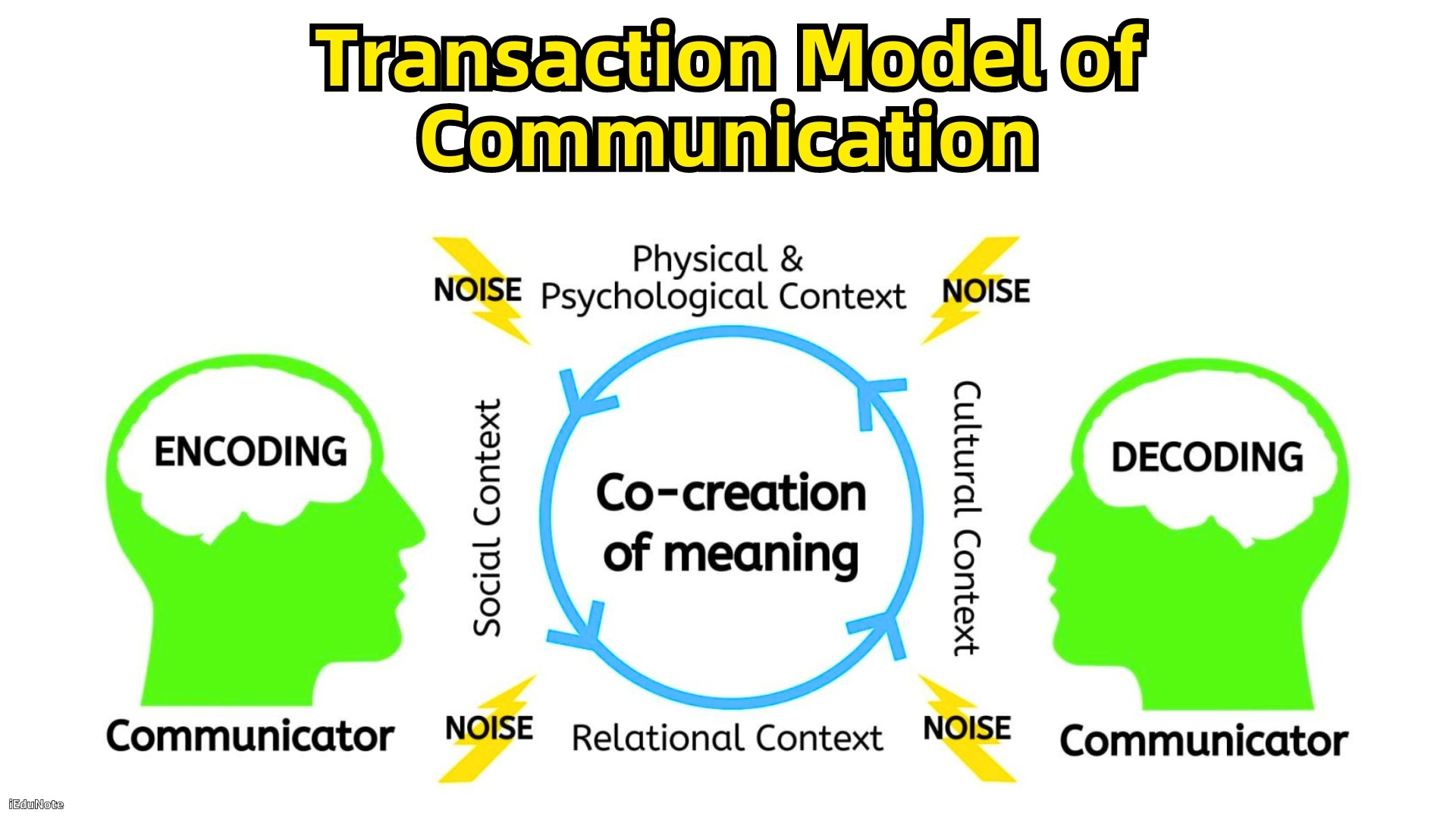
The transactional model of communication views communication as transaction, in this model, communicators simultaneously send and receive messages rather than as act exclusively as senders or receivers.
Thus, speaking and listening are not separate activities nor do they occur one at a time. According to the transactional view, people are continually sending and receiving messages; they cannot avoid communication. Communication is a confusing ball game in which a person catches and throws an unlimited number of balls at any time, in any direction, to any other person.
An individual does not always take turns in this game of communication. In this model, messages are everywhere. The people talking to you on the sidewalk, nodding to a passerby while stating agreement with you, is a transactional situation with multiple messages.
How you look, what you say, how receptive you are, and what is happening around you are part of the transactional model.
How does the Transaction Model of Communication differ from other models in terms of the roles of the sender and receiver?
In the Transaction Model, participants are called communicators, not senders and receivers. Unlike other models where participants alternate these roles, the Transaction Model suggests that individuals are simultaneously senders and receivers, engaging in a dynamic and continuous exchange of messages.
What are the contextual influences considered in the Transaction Model of Communication?
The Transaction Model considers three main contextual influences: social context, which refers to the rules or norms guiding communication; relational context, which includes the interpersonal history and type of relationship between communicators; and cultural context, which encompasses aspects of identity such as gender, ethnicity, and sexual orientation.
How does Transactional Communication facilitate the building of relationships and alliances?
Transactional Communication is not just about exchanging messages but also about creating relationships and forming alliances.
It involves the simultaneous sending and receiving of messages, allowing for real-time feedback and adaptation, which is essential for building understanding and relationships. The influence of relational, cultural, and social factors also plays a significant role in this process.
What are the advantages and disadvantages of Transactional Communication?
Advantages include the emphasis on non-verbal communication, a strong real-time feedback system, and equal opportunities for all communicators to participate.
Disadvantages include potential misunderstandings due to reliance on non-verbal communication, limitations to interpersonal communication, and the necessity of effective listening, which can be challenging for some individuals.
Process Theory or Process Model of Communication
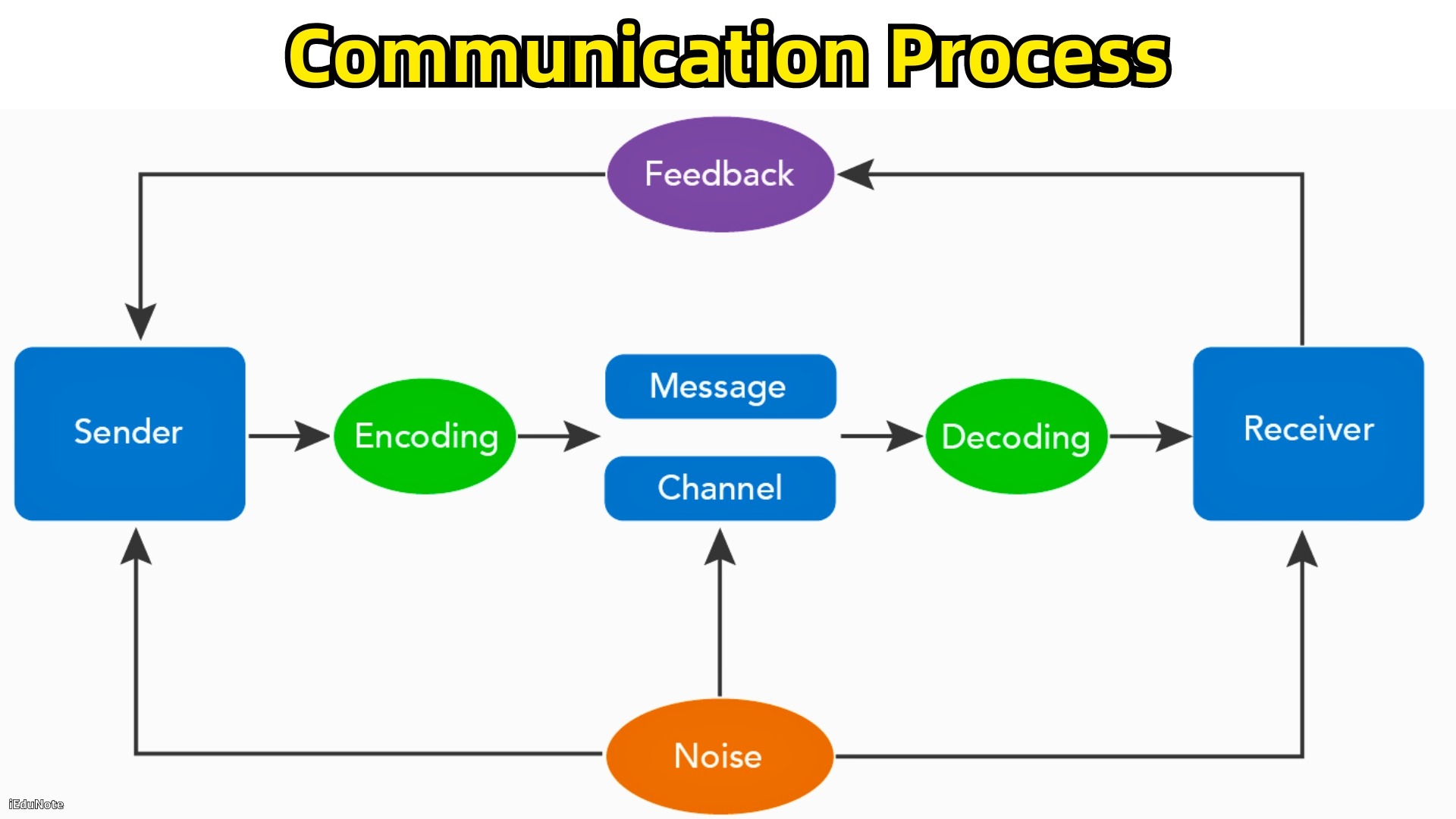
The model shows communication as a two-directional process. In a communication event, both the sender and the receiver share responsibility for the success of the communication event.
Messages flow in both directions, and the communication event includes components that do not appear in a one-way model.
It is the same process that is described in our process of communication topic above. The process model as Gibson and Hanna present it is shown below (1992:15).
What is the main goal of using the Communication Process Model?
The main goal is to ensure that the message decoded by the receiver is as close as possible to the intended message by minimizing the noise in the process, thus facilitating clear and effective communication.
What types of noise are mentioned in the Communication Process Model, and how do they affect communication?
The model mentions four types of noise: Physiological (distractions caused by physical conditions), Physical (environmental interference), Psychological (personal qualities affecting interpretation), and Semantic (misunderstanding of words). These noises can cause distortion, misinterpretation, and hinder effective communication.
Explain the five-step rule for effectively using the Communication Process Model.
The five-step rule includes:
- Understanding your objectives before conveying the message,
- dentifying the recipients and tailoring the message accordingly,
- Choosing the best method of communication based on the audience and objectives,
- Matching communication to the recipients’ competence and understanding, and
- Adjusting style based on feedback to ensure understanding.
Why is it important to match your communication to the recipients?
Matching communication with the recipients is crucial to ensure that the message is pitched at their level of competence and understanding, considering their learning styles and preferences, which helps minimize noise and achieve clear and concise communication.
How does the Communication Process Model emphasize continuous improvement in communication methods and techniques?
The model encourages obtaining feedback throughout the communication event to assess understanding and making necessary adjustments in style, message, or type of message, thereby promoting continuous improvement in communication methods and techniques.
Symbolic Interactionist Model of Communication
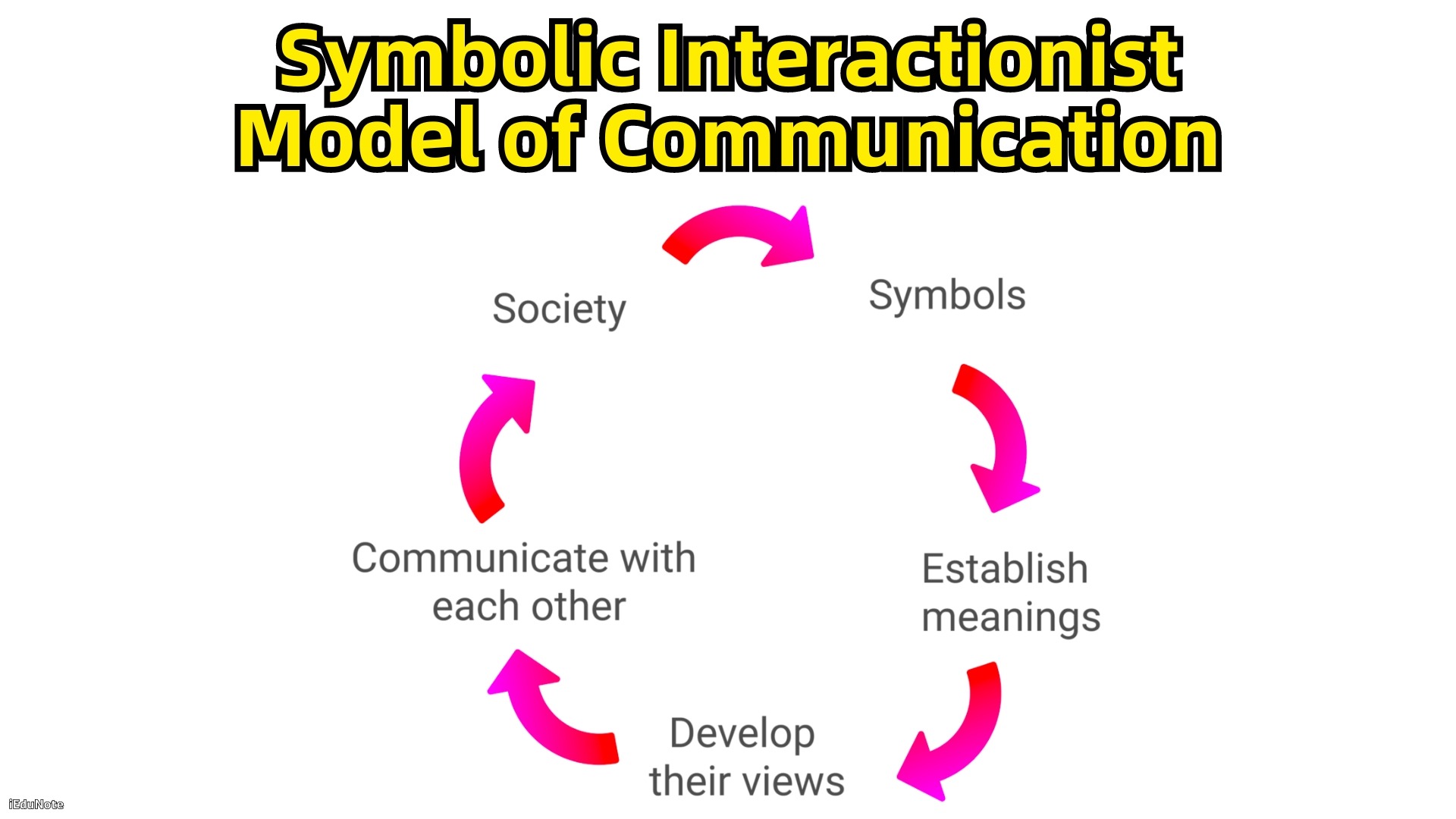
The symbolic interactionist believes that the self is built up through social interaction. The mind, the self, and the society are each functions of talk.
Therefore, communication occurs through the creation of shared significant symbols. Thus, meaning is socially derived.
Human beings define themselves, others, and the things in their world through negotiation. We talk to each other, exchange symbols, and discover the truth by doing these things. From this point of view, the communication process exists in the time as a shared system.
People exist independently but within a shared system.
Therefore, communication occurs when people exchange symbols and create and share the meaning of their experiences. The following diagram exhibits a symbolic interactionist communication model (Gibson and Hanna, 1992:14).
What is the main focus of symbolic interaction theory?
Symbolic interaction theory focuses on understanding humans’ relationship with society by analyzing the symbols and meanings that arise from social interactions. It posits that society is a product of everyday human interactions and that people make sense of their social worlds through communication and exchanging meaning through symbols and language.
Who is the true founder of symbolic interaction theory, and what is his contribution?
George Herbert Mead is considered the true founder of symbolic interaction theory. His teachings and lectures were gathered by his students and published in a book titled “Mind, Self, and Society,” which lays out the core concept of social interactionism.
What are the three premises identified by Herbert Blumer in symbolic interactionism theory?
The three premises are: 1) Humans act toward people or things based on the meanings they assign to them. 2) These meanings arise from our social interactions with one another, and meaning isn’t inherent in objects but formed through social interactions. 3) Humans adjust the meanings they assign to people or things by internally interpreting their interactions with the world.
How did Max Weber influence symbolic interactionism?
Max Weber influenced symbolic interactionism through his social action theory, which posits that society is a product of human activity and that social action should be the focus of study when analyzing a society. He described social action as an act carried out by a person after carefully thinking about it. He argued that understanding social actions involves both direct observational understanding and understanding the motive behind an action.
What are some criticisms of symbolic interactionism?
Some criticisms of symbolic interactionism include its failure to address macro-level issues such as politics and history in social structure, missing micro-level issues like emotions, and a lack of concept clarity, making it difficult for social scientists to apply the symbolic interactionism perspective.
Gamble and Gamble’s or Circle Model of Communication
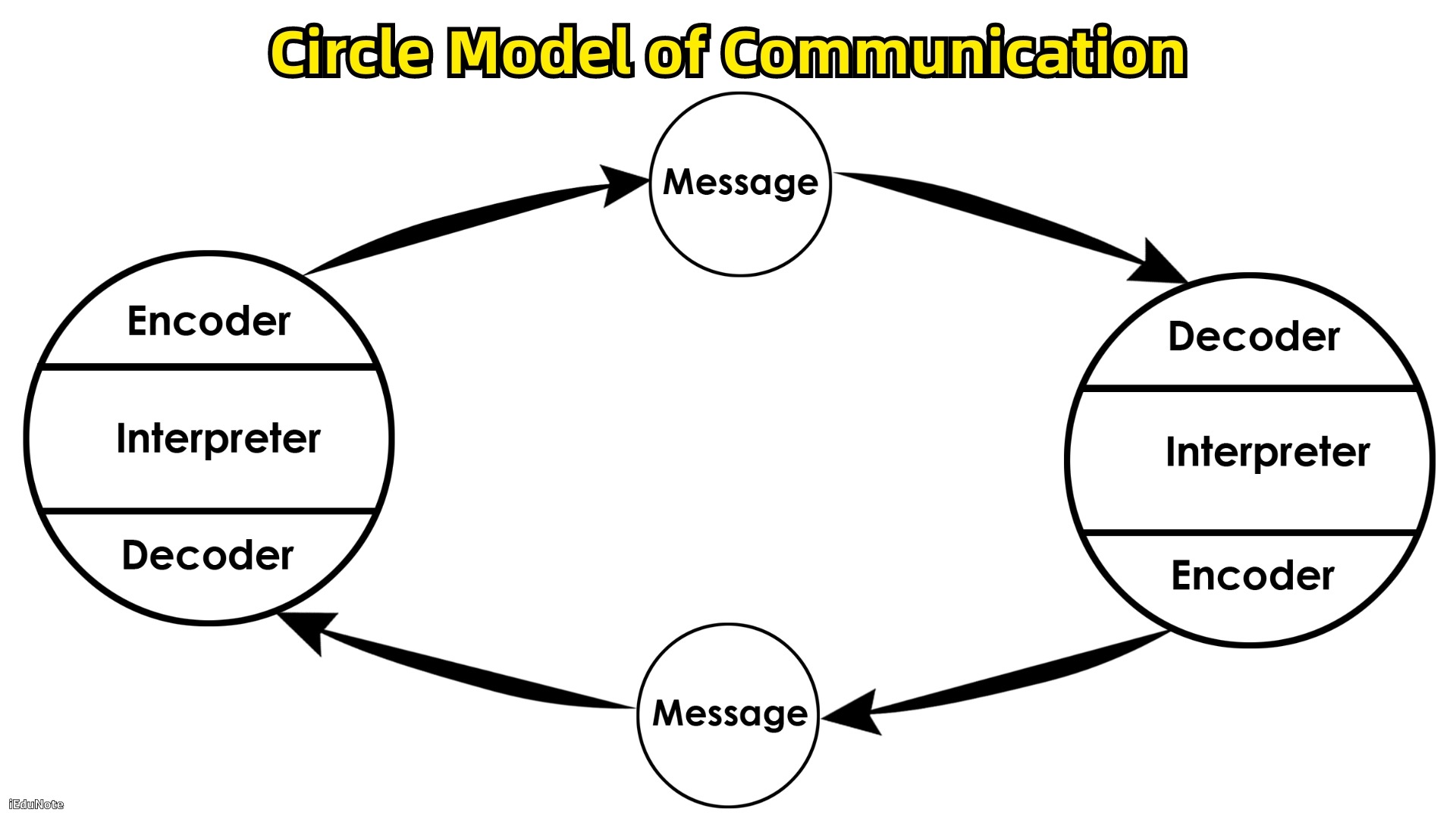
The circle model views communication as a circle, and the communicators share the sending and receiving responsibilities. It is known as Gamble and Gamble’s model of communication.
A message or messages may be sent through one or more channels, and the interaction occurs in and is affected by a definite context. The noise can enter the interaction at any point and affect the sending or receiving activities of the communicators.
Furthermore, noise can be caused by the context, present in the channel, or pop up in the message itself.
Helix Model or Helical Model Of Communication
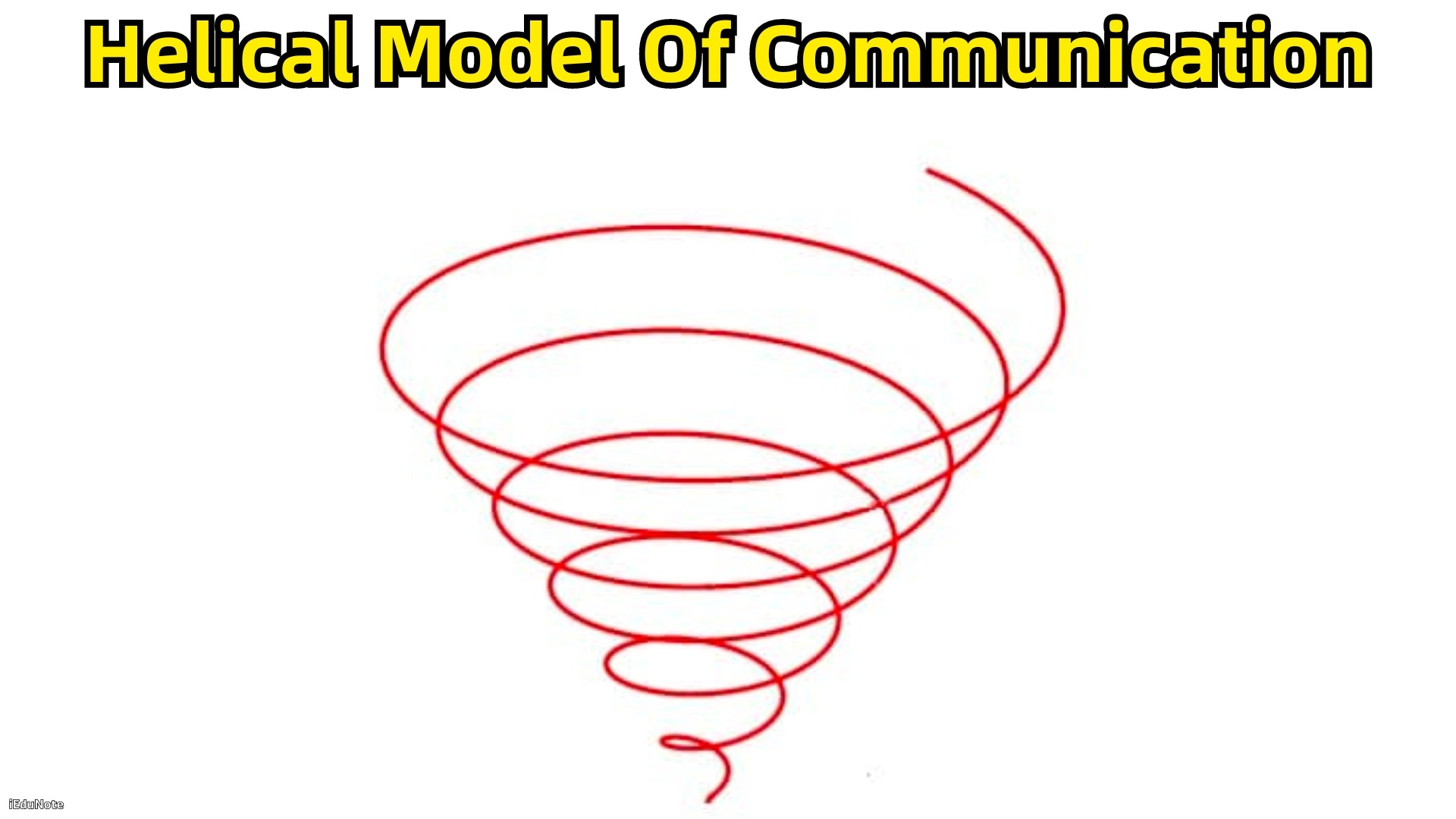
This model is propounded by Frank E.X. Dance (1967). The model depicts the communication process more abstractly. Dance’s spiral or helix represents how communication evolves or progresses in a person from birth to present.
The model also emphasizes the fact that each person’s present behavior is affected by his or her past experience and, likewise, that present behavior will have an impact on future actions. Thus, Dance’s helix indicates that communication has no clearly observable beginning and no clearly observable end.
The picture below exhibits Dance’s communication helix. The point where the spirals touch is the point of contact. Each time a contact occurs, the interactants send and receive messages.
Why is the model named the “Helical Model of Communication”?
The model is named the Helical Model because it represents communication as a dynamic and non-linear process, similar to the shape of a helix, which is a three-dimensional shape like a wire wound uniformly around a cylinder or cone.
How does the Helical Model depict the evolution of communication in a person’s life?
The model depicts communication as starting small and simple, like a baby crying, and gradually becoming more complex and expansive as the individual grows, learns, and gains more experiences, similar to the widening spirals of a helix.
What is the significance of time in the Helical Model of Communication?
Time is significant in this model as it emphasizes the continuity and evolution of communication. Communication is considered a dynamic process that progresses with time and age gaining complexity as more experiences are acquired and vocabulary increases.
What are some criticisms of the Helical Model of Communication?
Critics argue that the model is overly simplistic, abstract, untestable, and unorganized, with few identifiable variables. Some also question the assumption that the goal of communication is always growth and that continuity is always applicable in communication.